
Albert VI of Bavaria son of William V, Duke of Bavaria and Renata of Lorraine, born and died in Munich.

The Prince-Bishopric of Würzburg was an ecclesiastical principality of the Holy Roman Empire located in Lower Franconia west of the Prince-Bishopric of Bamberg. Würzburg had been a diocese since 743. As definitely established by the Concordat of 1448, bishops in Germany were chosen by the canons of the cathedral chapter and their election was later confirmed by the pope. Following a common practice in Germany, the prince-bishops of Würzburg were frequently elected to other ecclesiastical principalities as well. The last few prince-bishops resided at the Würzburg Residence, which is one of the grandest baroque palaces in Europe.

The Schönborn family is a noble and mediatised formerly sovereign family of the former Holy Roman Empire.

Lothar Franz von Schönborn-Buchheim was the Archbishop-Elector of Mainz from 1694 to 1729 and the Bishop of Bamberg from 1693 to 1729. As Archbishop of Mainz, he was also Archchancellor of the Holy Roman Empire. Lothar Franz von Schönborn is known for commissioning a number of Baroque buildings, such as the palace Schloss Weissenstein.

Friedrich Karl von Schönborn was the Prince-Bishop of Würzburg and Prince-Bishop of Bamberg from 1729 to 1746. He also served as Reichsvizekanzler (Vice-Chancellor) of the Holy Roman Empire from 1705 to 1734.
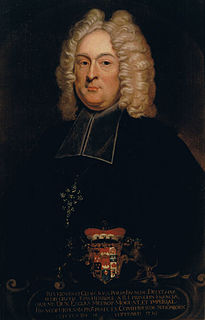
Johann Philipp Franz von Schönborn (1673–1724) was the Prince-Bishop of Würzburg from 1719 to 1724. His principal claim to fame is his commissioning of the Würzburg Residence, a major work of Baroque architecture.
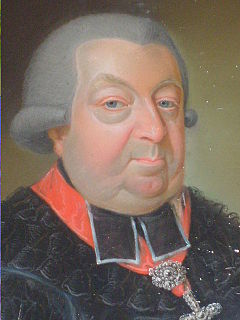
Christoph Franz von Buseck was the Roman Catholic bishop of Bamberg and the last Prince-Bishop of Bamberg.
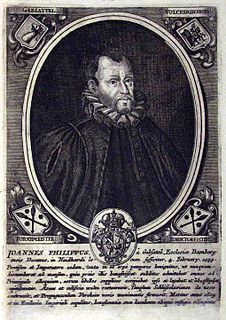
Johann Philipp von Gebsattel was the Prince-Bishop of Bamberg from 1599 to 1609.

Johann Gottfried von Aschhausen (1575–1622) was the Prince-Bishop of Bamberg from 1609 to 1622 and Prince-Bishop of Würzburg from 1617 to 1622.

Franz von Hatzfeld was the Prince-Bishop of Würzburg from 1631 to 1642 and the Prince-Bishop of Bamberg from 1633 to 1642.

Friedrich August Valentin Voit von Salzburg was a commander of military units from Ansbach-Bayreuth. During the American Revolutionary War, the Kingdom of Great Britain purchased the services of soldiers from various German princes. Voit commanded the First Regiment of the Ansbach Regiment led by Friedrich Ludwig Albrecht von Eyb, designated the Voit Regiment. In May 1778, Eyb left and Voit took charge of the regiment. Also, he was in command of all Ansbach troops in North America by the time the war had ended.
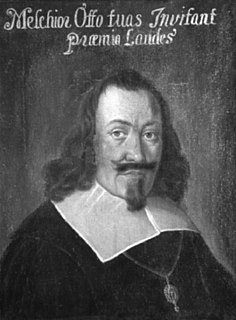
Melchior Otto Voit von Salzburg (1603–1653) was the Prince-Bishop of Bamberg from 1642 to 1653.

Peter Philipp von Dernbach (1619–1683) was the Prince-Bishop of Bamberg from 1672 to 1683 and Prince-Bishop of Würzburg from 1675 to 1683.
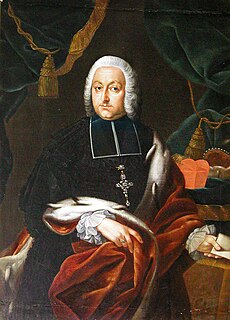
Freiherr Johann Philipp Anton von und zu Frankenstein (1695–1753) was the Prince-Bishop of Bamberg from 1746 to 1753.
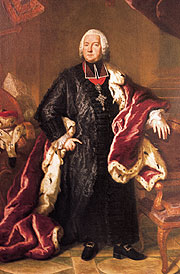
Adam Friedrich Graf von Seinsheim (1708–1779) was the Prince-Bishop of Würzburg from 1755 to 1779 and Prince-Bishop of Bamberg from 1757 to 1779.
Georg Arnold was an Austrian composer and organist.
Georg Mengel was a German composer. After service in the army from 1640 he was Kapellmeister to Fürstbischof Melchior Otto Voit von Salzburg at the court of the Prince-Bishopric of Bamberg.

Gaillenreuth Castle is situated high above the Wiesent river on its upper western perimeter in the village of Burggaillenreuth. The village belongs to the borough of Ebermannstadt in the county of Forchheim in the south German state of Bavaria. All that survives is the southern part of the hill castle. As well as parts of the outer ward there is a tower house from the post-1632 period.




















